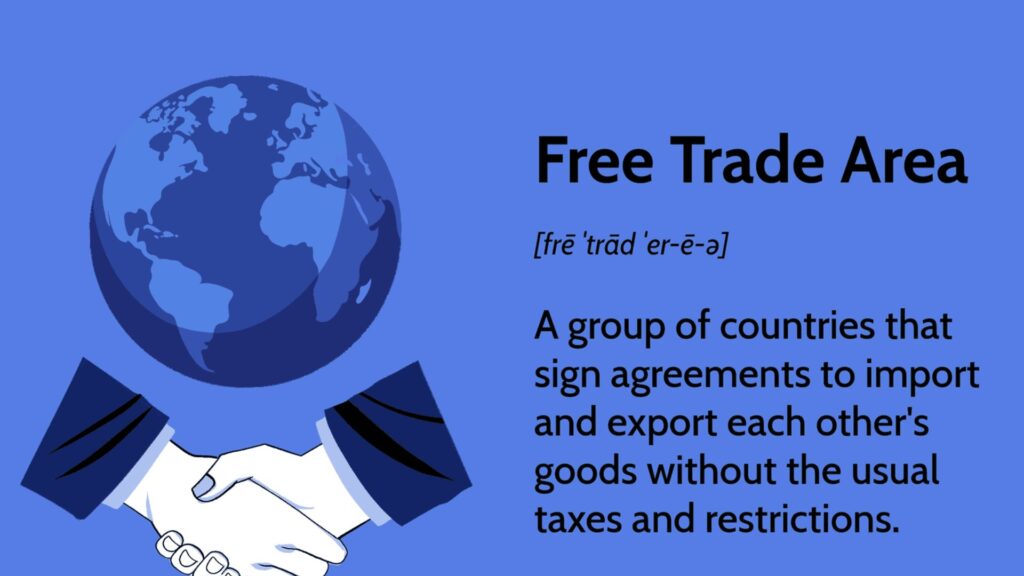Business
Trade Agreements: Building Bridges in Global Commerce
Introduction
In today’s interconnected world, no nation can remain isolated when it comes to trade. Countries depend on each other for resources, technology, and markets. This interdependence has given rise to trade agreements, formal arrangements between nations that establish rules and guidelines for exchanging goods, services, and investments. Trade agreements are critical for boosting economic growth, reducing trade barriers, and fostering cooperation across borders.
This blog explores the types of trade agreements, their benefits, challenges, and examples, while also answering frequently asked questions.
What Are Trade Agreements?
It is a contract or treaty between two or more nations that outlines the terms of trade between them. These agreements are designed to:

- Reduce or eliminate tariffs, quotas, and duties.
- Simplify customs procedures.
- Promote fair competition.
- Protect intellectual property rights.
- Encourage investments.
Trade agreements are binding under international law and can be bilateral (between two countries) or multilateral (involving multiple countries).
Importance
- Economic Growth : By opening markets, agreements increase exports and imports, creating opportunities for businesses.
- Job Creation : Expanding trade often leads to new industries and jobs in both manufacturing and services.
- Access to Resources : Nations can access raw materials, technology, and goods that may not be available domestically.
- Global Competitiveness : Trade agreements push businesses to innovate and improve efficiency.
- Political Cooperation : Strong economic ties often reduce conflicts and build diplomatic trust.
Types
1. Bilateral Trade Agreements
- Agreements between two nations.
- Example: The U.S.–Mexico Agreement on sugar exports.
2. Multilateral Trade Agreements
- Agreements involving multiple countries.
- Example: The World Trade Organization (WTO) agreements that regulate trade globally.
3. Regional Trade Agreements (RTAs)
- Nations within a specific geographic area form agreements.
- Example: European Union (EU), North American Free Trade Agreement (NAFTA) (now replaced by USMCA).
4. Free Trade Agreements (FTAs)
- Eliminate tariffs and quotas among member nations.
- Example: ASEAN Free Trade Area (AFTA) in Southeast Asia.
5. Customs Unions
- Member nations adopt a common external tariff system.
- Example: The Southern Common Market (MERCOSUR) in South America.
6. Common Market Agreements
- Allow free movement of goods, services, capital, and labor.
- Example: European Single Market.
Key Examples
North American Free Trade Agreement (NAFTA) → USMCA
- Established in 1994 between the U.S., Canada, and Mexico.
- In 2020, replaced by United States–Mexico–Canada Agreement (USMCA).
- Focused on reducing tariffs, protecting intellectual property, and promoting fair labor practices.
European Union (EU) Single Market
- One of the most advanced trade blocs in the world.
- Allows goods, services, capital, and people to move freely across member states.
World Trade Organization (WTO) Agreements
- WTO was established in 1995.
- Provides a platform for negotiating and enforcing global trade rules.
Comprehensive and Progressive Agreement for Trans-Pacific Partnership (CPTPP)
- Involves countries like Japan, Canada, Australia, and Mexico.
- Promotes free trade in the Asia-Pacific region.
African Continental Free Trade Area (AfCFTA)
- Aims to create a single market across Africa.
- Could boost intra-African trade significantly.
Benefits of Trade Agreements
- Lower Costs for Consumers : Reduced tariffs make imported goods cheaper.
- Expanded Business Opportunities : Companies gain access to international markets.
- Encouragement of Innovation : Competition drives businesses to adopt new technologies.
- Foreign Direct Investment (FDI) : Trade agreements attract investors seeking access to larger markets.
- Stronger Diplomatic Ties : Economic interdependence strengthens relationships between nations.
Challenges and Criticisms
- Unequal Benefits : Not all industries or countries benefit equally.
- Job Losses : Certain domestic industries may suffer due to increased imports.
- Dependence on Imports : Over-reliance on foreign goods can weaken local industries.
- Environmental Concerns : Increased production and shipping can harm ecosystems.
- Complex Negotiations : Reaching consensus among multiple countries can take years.
Future of Trade Agreements
With globalization, trade agreements are evolving. Emerging trends include:
- Digital Trade Agreements : Covering e-commerce, cybersecurity, and data protection.
- Green Trade Policies : Incorporating climate change and sustainability measures.
- Regional Blocs Expansion : More countries joining existing agreements.
- Focus on Fair Trade : Ensuring labor rights, wage standards, and ethical sourcing.
Frequently Asked Questions
1. What is the difference between free trade and fair trade?
- Free trade focuses on reducing tariffs and quotas.
- Fair trade emphasizes ethical practices, fair wages, and sustainability in trade.
2. Do trade agreements benefit all countries equally?
No. Larger economies often benefit more due to stronger industries, while smaller economies may struggle to compete. However, they can gain from access to bigger markets.
3. Why do some people oppose trade agreements?
Opposition comes from concerns about job losses, outsourcing, environmental damage, and loss of local industry competitiveness.
4. How do trade agreements affect consumers?
Consumers benefit from lower prices, more choices, and better quality products. However, domestic producers may face tougher competition.
5. Can trade agreements fail?
Yes. If countries don’t comply with rules or economic conditions change drastically, agreements may collapse or need renegotiation. Example: NAFTA was renegotiated into USMCA.
6. What role does the WTO play in trade agreements?
The WTO acts as a global referee, ensuring nations follow trade rules, settling disputes, and promoting fair competition.
7. How do trade agreements support developing countries?
They provide access to larger markets, encourage investments, and help nations integrate into the global economy.
Conclusion
Trade agreements are the backbone of global commerce. While they come with challenges, their role in shaping economies, creating opportunities, and fostering international cooperation cannot be underestimated. The future of trade will likely be defined by digitalization, sustainability, and inclusivity. For businesses, policymakers, and consumers alike, understanding trade agreements is essential in today’s globalized economy.